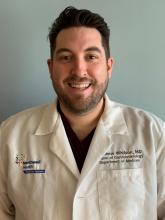Introduction
For many young faculty, the transition from trainee to educator can be daunting. We may accrue valuable experiences as a senior resident or fellow on the floors, but nothing fully prepares you for the challenge of integrating education into your daily life as a new attending. This challenge is all the greater in a procedural field such as gastroenterology, in which educators need to turn their tangible skills into verbal instructions for a trainee.
The aim of this article is to ease that transition, whether it be on the wards, in the clinic, or in the endoscopy suite. Below are a few key tips on becoming an effective educator for the new gastroenterology attending.
In the clinic and on the wards
Don’t try to do too much: It is impossible to effectively teach every component of a single case. If you attempt to teach on multiple topics at once, the major points of the case may be missed. Choose a salient point from the specific case in front of you and explain how it changed your management. For example, “How did the ulcer stigmata change your management in the case of Mrs. B?” The clinical learning pearl in this case might be the bleeding risk of clean-based ulcers rather than the timing of endoscopy or PPI dosing. By focusing on one takeaway point per case, you can maximize the yield for the learner.
Make them commit: While reviewing a case with a trainee, you want to learn not just what they are thinking but also why they are thinking the way they are. By encouraging trainees to explain why they believe the diagnosis to be a particular disease or why a particular test should be the next step in a work-up, they are forced to explain their decision making. This allows you to truly understand their critical reasoning and ultimately correct any faulty logic along the way. In addition, trainees need practice in making clinical decisions. It is all too easy for them to let the attending drive clinical plans while on a busy service. Having them commit to a diagnosis or a plan will keep them engaged and is a key part of effective teaching frameworks such as the One-Minute Preceptor or SNAPPS.1
Correct mistakes: Trainee mistakes are a tremendous learning opportunity. A preceptor ought not gloss over these but rather address them directly. Clearly stating that something is wrong and then explaining why it is wrong and what the correct decision should be allows you to demonstrate clinical reasoning for your trainee. On a busy clinical service, it is easy to just say something is wrong, but the trainee will gain little from that experience.
In the endoscopy suite
Understand the learner’s objective: Depending on the trainee’s experience, the learning objective for a procedure may be different. A beginning endoscopist may hope to “reach the cecum,” while a more seasoned endoscopist may hope to effectively snare a flat polyp. The available procedural cognitive load for each trainee is different, and a beginning trainee may not be able to effectively integrate advanced techniques no matter how well you communicate with them.2 Establishment of the learner’s specific learning objectives for a procedure allows them to identify where they are and provides an opportunity for you to provide specific feedback and assistance to that individual.



